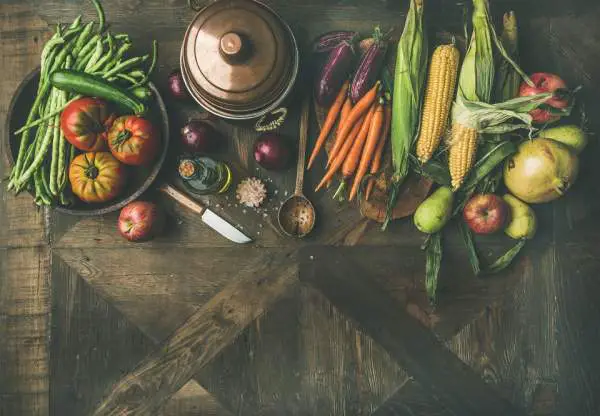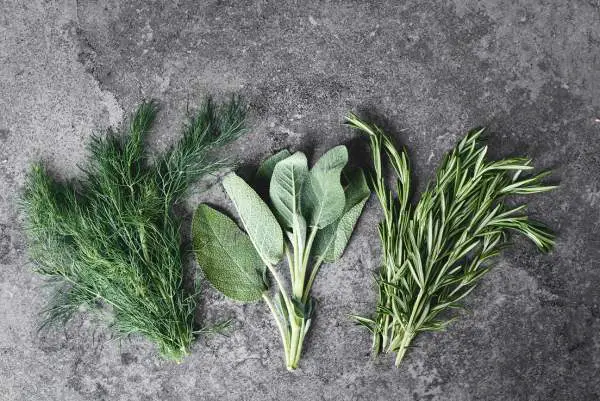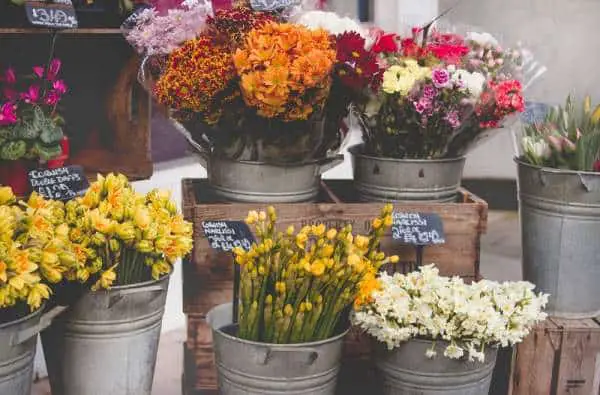Hydroponics is a booming means of growing produce at home. Beginner gardeners who are thinking about this often wonder what are the best crops to grow, which are easy and will deliver the best yields.
There are many reasons why individuals are turning to this way of growing, and it doesn’t matter if it is because they want to help save the planet, or cut down on their grocery bill. Hydroponics is a great way to do this and much more.
While not every vegetable thrives in a hydroponic environment, many do. So here are the top, nine any new hydroponic grower can grow into their system. Some are very easy, while others take a bit more effort and space, but nonetheless, all of them are worth adding to any hydroponic garden.
Here, we will look at each of these top nine hydroponic vegetables and which systems are best suited to their growth.
Best Vegetables for Hydroponics
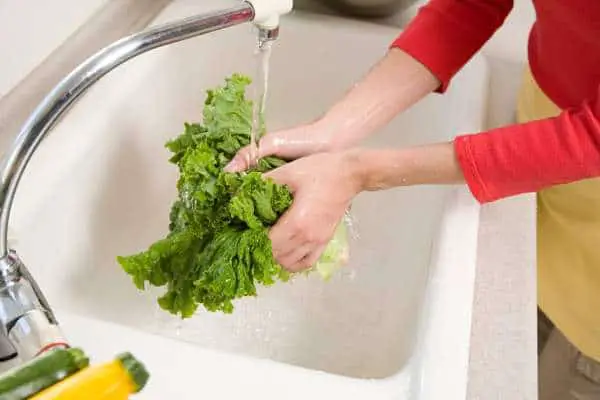
Lettuce
Leaf lettuce makes an outstanding option for hydroponic cultivation. It grows in the simplest systems and requires minimal attention, making it a perfect low-maintenance crop to grow hydroponically. As you grow, you can harvest the external leaves from your lettuce, meaning you will end with a prolonged crop of fresh, crunchy lettuce. As the leaves are cut, the internal leaves will grow rapidly to take their place.
There are many varieties to choose from, and most of them are suitable for growing this way. The more common types of hydroponic lettuce are:
- Tom Thumb
- Boston
- Iceberg
- New York
- Romaine
- Buttercrunch Bibb
- Simpson
- Waldman’s Dark Green
Lettuce is suitable to grow using the following techniques: Nutrient Film Technique (NFT), Deep Water Culture (DWC), Ebb, and Flow systems. If the temperature gets too hot for them, lettuce can bolt and may taste bitter. They are a cool-weather vegetable and like temperatures between 50 and 70 degrees Fahrenheit. Lettuce is also fond of high nitrogen levels.
Also read: Why is my hydroponic lettuce bitter?
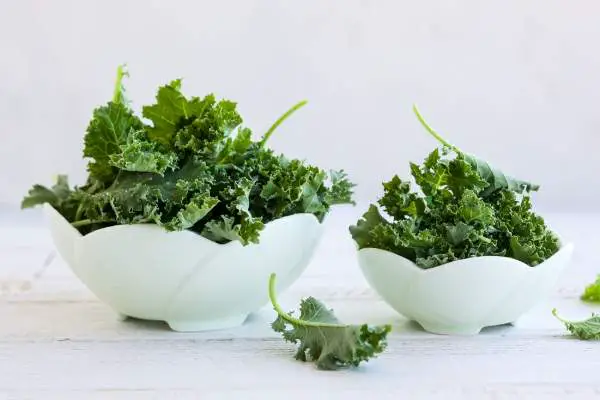
Kale
Kale is one of the top veggies that is grown because of its health benefits and its delicious flavor. This can be germinated from seeds and once it begins growing, it can handle a wide range of temperatures from 45 to 85 degrees Fahrenheit.
From seed to harvest takes around ten weeks, yet like lettuce, you can pluck up to 30% of the plant leaves. Again, new leaves will grow back and you can extend the time your crops are in your system. If you transplant, you can cut the time to harvest down to around 6-weeks. One good thing with kale, when grown indoors, is that many pests don’t target it. Aphids are the primary culprit, yet they can suffer from powdery mildew.
The main varieties are Curly kale (the common type sold in grocery stores), Lacinato kale (sweeter and have longer leaves), and Red Russian Kale. This variety is the sweetest you can grow and has a reddish appearance.
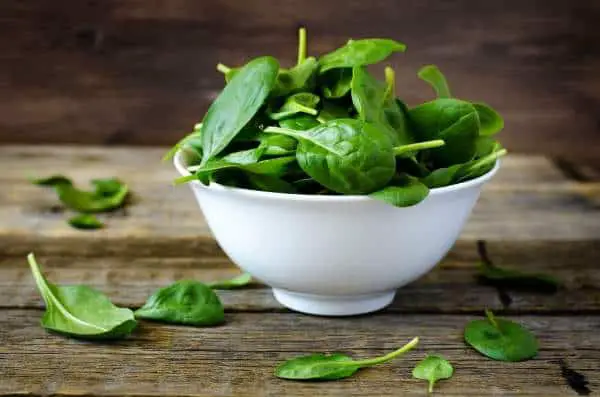
Read more: How to Grow Cauliflower in Aquaponics
Spinach
Being another cool weather crop, this is perfect to grow along with lettuce and kale. Any temperature over 75 degrees Fahrenheit will see the plant suffer. It can be grown from seeds and many hydroponic growers will place their seeds in the refrigerator for up to three weeks before planting. This creates a plant that is hardier and thus a healthier plant. They do like around 12 hours of light daily, however, because they are cool-weather plants, T5 fluorescent lamps may be the better option for lighting.
When it is almost time to harvest, you can lower the temperatures because this has the effect of making the crop sweeter. However, because of this, growth will slow. It is advisable to go for quality over quantity to prevent a bitter-tasting leaf.
Most systems are suitable for spinach, but just remember to plant them a few weeks apart so you can have continual harvests. A raft system can be perfect for these as it can be for lettuce and kale as well.
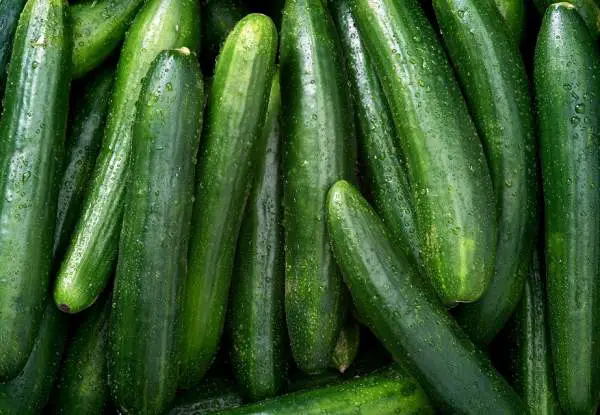
Cucumbers
Growing cucumber with hydroponic farming can be so rewarding. These vegetables love the conditions they are given. Warmth, nutrients, and lots of moisture are perfect. Growers are amazed at the yields because they quickly become one of the highest-yielding vegetables you can grow.
The ideal temperatures for optimal growth are just outside the ranges that the above leafy greens like. Saying this, they can grow in a range from 60 to 82 degrees Fahrenheit. This makes them ideal for growing alongside the next two crops on the list.
Cucumber likes a pH of 5.8 with an EC between 1.8 and 2. Growers can find seeds expensive for a good hybrid strain, yet when you see what fruits one seed can bear once it is growing, this cost per seed is more than justified.
The hardest thing with cucumber growth is they are vining plants and will need trellises. This makes them more suited to flood and drain or other bucket-type systems, where there is plenty of growing medium to help support. This being said, coco coir is one of the better mediums to use as long as the plants are supported well.
Be on the lookout for pests like mites, thrips, whiteflies, and aphids. These insects love to take advantage of cucumber crops.
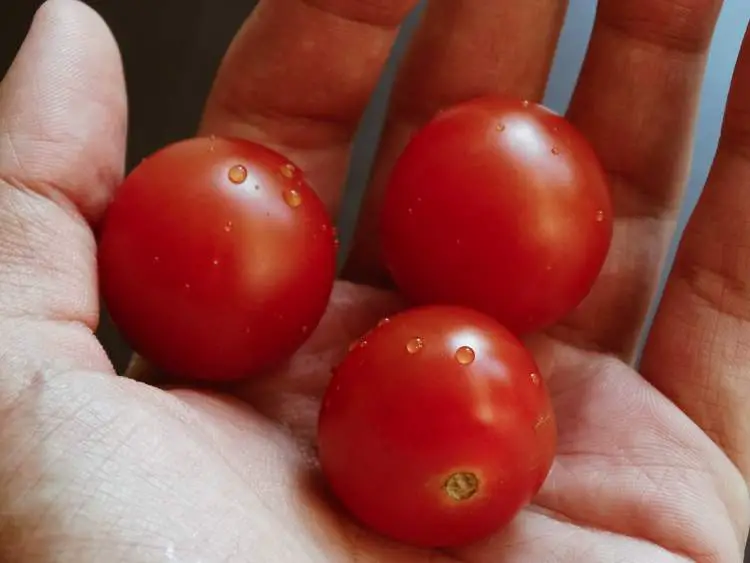
Tomatoes
When growers move on to tomatoes, it shows they understand their system and wish to go on to the next level. Having a continual supply of fresh tomatoes is what hydroponics is all about.
These are warm-weather plants and like the temperatures like cucumbers. They do however prefer an EC level that begins at 2 and goes up to 5, so any system will need to be separated to allow tomatoes to grow on their own, or at least with other plants that like this level.
The ideal pH is between 5.5 and 6.5 and the temperature is between 58 and 79 degrees Fahrenheit. The upper end of the range more preferable.
Also read: Best Hydroponic Systems for Tomatoes
They can be planted from seeds, yet cuttings or seedlings are advisable because it takes too long to grow fruiting plants from seeds. There are many varying types, yet the vining varieties are popular because they are easier to control and harvest from.
Tomatoes as if cucumbers require trellises so they can grow upward, and they will deliver a steady stream of fresh fruits you can part harvest.
Tomatoes can suffer from various pests and diseases like spider mites, aphids, mosaic virus, and much more. One other thing that can occur depending on tomato variety is they can be prone to splits. This is when the inside of the tomato grows faster than the skin. This often happens when they take up too much water in a short time.
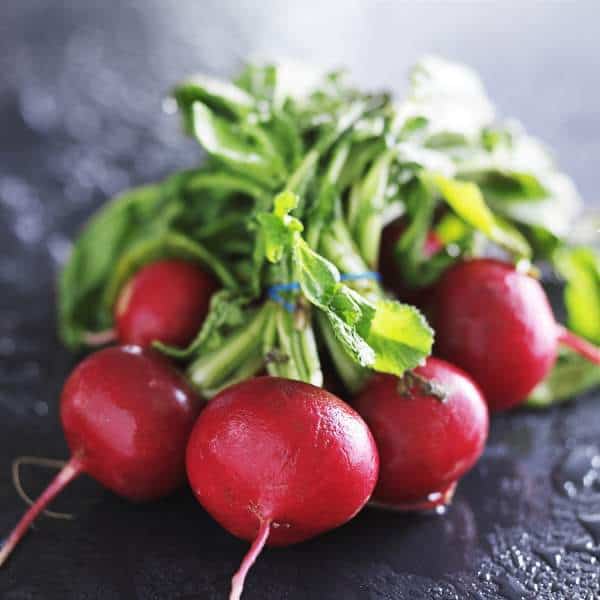
Radishes
These are cool-weather crops so they can accompany the first few plants on the list. They also mature rapidly and just happen to be one of the easiest plants to grow.
The recommended pH is best around 6 to 7, and the temperatures are between 50 and 65 degrees Fahrenheit. If you are growing a longer radish variety, these can withstand a bit more heat than the short bulb kinds. EC levels should fall between 1.6 and 2.2.
Lighting requirements are minimal, and at least 6-hours are needed. Optimal levels are between 8 and 10 hours of light.
Seedlings are not recommended, and they are better grown from seeds. From germination to harvest can be as little as three or four weeks. Add to this, if you stagger your planting, you can harvest all the way through the year. This cool-weather vegetable grows excellent in hydroponic systems where the temperature hovers between 72-76 degrees Fahrenheit.
The most common problem with radish is they can easily bolt if they are not kept moist, and if they are too wet, they can suffer from root rot.
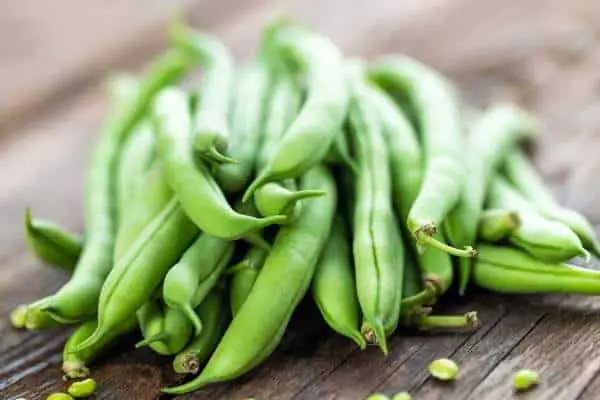
Beans
Nearly every kind of bean can be grown in a hydroponic garden. There are hundreds you can choose from yet the most common are runners, string, pole beans, and bush beans. These are easy maintenance and very productive for the effort which goes into growing them. Some types do take more effort because they are climbing/ vining plants so they will need support trellises.
When growing from seed, they are speedy germination and can take less than two weeks. You may even see some varieties start in as little as seven days.
When growing and you can see they have two true leaves, then they are the right size to go into your garden. Depending on your system type, although ebb and flow is the better option, however, a drip system is also ideal. Plants should be planted around 4-inches apart when they are the bush variety. Pole beans should be spaced a little wider apart at around 6-inches.
One good thing with beans is they self-pollinate. The growing medium should be loose so hydroton pebbles or a mix of perlite and vermiculite are good options and have several advantages. With a neutral pH, perlite won’t affect your levels and expanded clay pebbles offer enough moisture and oxygen to the roots.
Twelve or thirteen hours of light is enough, and the daily temperatures should be between 70 and 80 degrees Fahrenheit. If a temperature falls below 60 or rises above 60, then there will be a knock-on effect to the plant’s pod growth.
Beans don’t need many nutrients and when spacing them apart when planting, you can have a continual harvest. This can come in as little as 50 days for each plant.
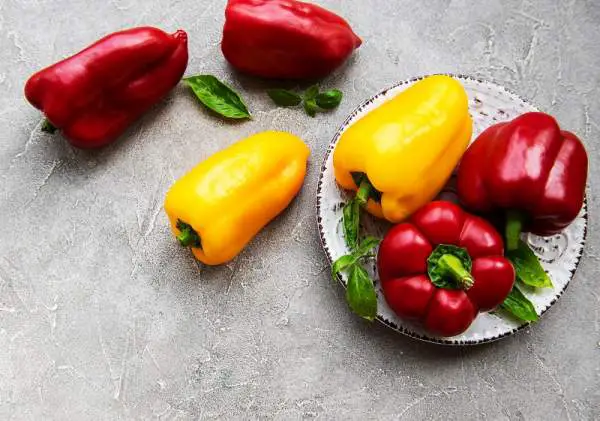
Peppers
Peppers are a great addition as they can be grown in any season. Not just this, but yields growers can experience are much larger than if they are grown by conventional means. This means fruits are larger and of better quality as the plants are delivered what they need to allow them to grow to their genetic potential.
Ebb and flow systems are best suited to this kind of vegetable, although they can be comfortable being grown in others that have a good base of growing media for support. These plants can grow quite large, so they need additional spacing of between 7 to 9 inches between plants. This can limit a pot to two plants only.
Lighting needs to be around six to eight inches above the plants and will need adjusting as they mature. If the bulbs are closer than this, it can cause scorching, and if further away, it can affect the yield or potential growth.
Lighting needs to be up to 12 hours per day, and no less than 10. Additionally, they will need sufficient amounts of nighttime hours as well. Daily temperatures need to be between 73 and 80 degrees Fahrenheit, so they are perfect companions to be with cucumbers and tomatoes.
Extra attention is required during their growth where stem buds need pruning as the plants are about 8-inches in height. This helps the plant devote its energies to larger fruits than lots of smaller ones.
The pH levels need to be between 5.5 and 7, and the EC should fall in the range of 3 to 3.5.
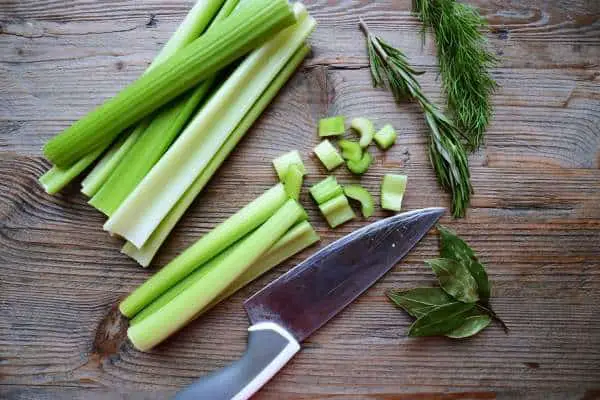
Celery
Celery can be one of the harder vegetables to grow in a hydroponic environment, but it doesn’t mean it’s impossible. Celery seeds take up to two weeks to germinate, which is pretty long compared to other vegetables. A quicker alternative is to use the stalk of celery you purchased from the store.
If you take the stalk and cut 2 inches from the bottom, then place the base in a plate of room temperature water, it will actually start to grow after only a week. Celery needs a lot of water, so the proper system to choose would be a deep water system. Along with germinating seeds, harvesting celery can take up to 4 months total after the seeds are planted.
Celery likes a pH level of 6.5, and the EC level of the nutrients should be 1.8 to 2.4. This can be an accompanying plant in a grow room that is geared up for lettuce and cool weather crops. The daylight temperatures should be between 58 and 80 degrees Fahrenheit. Lighting isn’t extreme and they only need around 6 hours per day.
It can take a long time to maturity and harvest, and they can test a grower who will need patience, however, growing this crop can be one of the most rewarding considering how expensive it can be from the supermarket.
Benefits of Hydroponics for Growing Vegetables
Using hydroponics to grow vegetables can be highly beneficial, especially in regions where conditions are not suitable, or those times of the year when nothing will grow. Many of the crops above can be grown around the year, or you can grow these while planting any of the many others, which aren’t on the list in a different growing season.
There are countless benefits no matter what you choose to grow, and here are a few you will see:
Larger Yields
Hydroponics can’t make vegetables grow larger than their genetics lets them, however, they can grow to their full potential and in a much smaller space than they can in soil. Being able to control the nutrients and pH levels in the water also ensures only optimal growth for the vegetables leaving little room for failure.
All Year Round Crops
As we just saw, because the gardener is in total control, they can use artificial lighting and warner indoor growing conditions to grow through the year. Crops that are out of season become expensive when they are shipped in, but having them a few steps away from your kitchen makes all the difference.
Less Space
Hydroponic systems can be built almost anywhere. They can be indoors away from any natural light, or they can be in outdoor areas undercover, or in a greenhouse in the garden. However, with a much smaller space, they can churn out many more crop harvests which are possible than if the garden was in the soil.
Conclusion
When a hydroponic garden is up and running, it can easily produce more than enough food for a large family.
While some crops are not suited, there can be little need to purchase some vegetables ever again. Many growers begin by just growing for consumption, yet as they go along they find they expand and need to begin getting rid of vegetables because they are producing too many.
Family and friends will be thankful for tasty fresh vegetables, yet there are the shrewd growers who turn their gardens into small home enterprises.
The vegetables above are just the tip of what is possible with hydroponics. The choice of what you grow is up to you, but just the ones above mean you can have a wide variety of choices. Start with these and as soon as you gain more knowledge, or you find you have that extra little space, you can expand and tackle herbs, strawberries, or anything else you find is hard to come by where you live.

